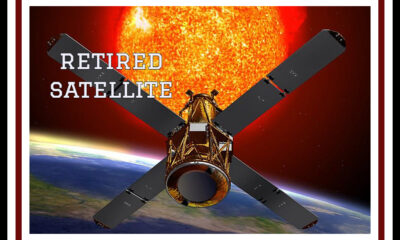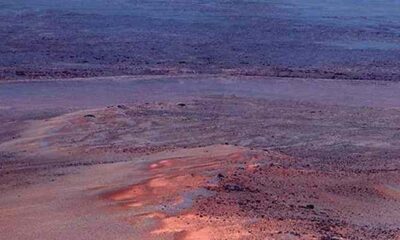bio tech
NASA prepares the PREFIRE mission to explore the polar regions of Earth
Published
4 weeks agoon

NASA is prepared to launch PREFIRE, a new mission designed to research climate in Earth’s remote regions, such as the Arctic and Antarctic, using two shoebox-sized climate satellites
Polar Radiant Energy in the Far-Infrared Experiment (PREFIRE), a new mission from the National Aeronautics and Space Administration (NASA), is prepared. The space agency plans to launch the two shoebox-sized cubesats into near-polar orbits independently in order to investigate the process of heat loss from Earth’s most distant areas, the Arctic and Antarctic, to space.
The “Ready, Aim, PREFIRE” CubeSat is one of the PREFIRE spacecraft, and Space.com reports that it should launch no early than May 22. A few days after the first satellite’s launch, “PREFIRE and ICE,” the second satellite, will be launched.
The two are intended to detect radiation in the far-infrared with wavelengths greater than 15 microns. Approximately 60% of the heat lost near the poles is attributed to this radiation. “We’ve never measured that before,” commented Tristan L’Ecuyer, the PREFIRE main investigator at the University of Wisconsin-Madison, in a call with reporters on May 15. According to L’Ecuyer, PREFIRE will help researchers better understand how various characteristics at the poles—such as humidity, clouds, and surface variations between frozen and liquid states—affect the amount of heat dissipated into space.
The PREFIRE mission: Everything you need know
The CubeSats, according to America’s space agency, will study how much heat is emitted into space by Earth’s polar regions and how that heat impacts our climate.
The CubeSats will detect heat in the form of far-infrared energy that is emitted into space by the Earth’s surface and atmosphere using a thermal infrared spectrometer.
The CubeSates are equipped with a platform that is less expensive than full-size satellites to address a number of important topics.
Scientists will be able to better comprehend the greenhouse impact at the poles thanks to data from the PREFIRE mission. It will look into how well clouds, water vapor, and other components of the atmosphere can retain heat and keep it from radiating into space.
NASA said the information will be used to update models of the climate and ice sheets, which will help forecasters better understand how sea level, weather, snowfall, and ice cover will likely vary as the planet warms.
You may like
-


Earth’s North Pole is moving more quickly
-


NASA’s retired satellite is falling to Earth, but the hazard is minimal.
-


Runaway Supermassive Black Hole Found by NASA’s Hubble Telescope, Leaving a Trail of New Stars
-


NASA will finally launch the Psyche asteroid probe in October 2023 after several delays
-


After A Solar Flare Explosion On The Sun,An X-Class Solar Storm Will Strike Earth
-


On Mars-NASA’s Curiosity Rover discovers the clearest evidence of water
